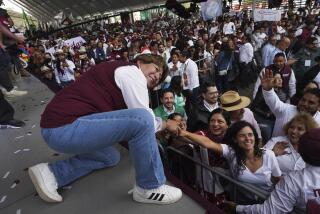A delicate truce brings relative calm to parts of Syria despite breaches
Reporting from Beirut — A tentative cease-fire brokered by the United States and Russia appeared to be holding Saturday in Syria, despite reports of breaches from both sides in the conflict.
The so-called “cessation of hostilities” — which began at midnight Friday Damascus time — is widely regarded as the most ambitious diplomatic effort to date to bring a pause to the fighting in Syria, which has been wracked by violence for almost five years.
The Syrian conflict has resulted in more than 200,000 deaths, widespread destruction and the displacement of millions of people, helping to trigger a refugee crisis in Europe. To date, the war has eluded all diplomatic efforts to resolve it.
Russia, which intervened in the war last year on the side of the government of President Bashar Assad, said it had suspended all airstrikes in areas where armed rebels had vowed to join the cease-fire. Moscow’s air onslaught in recent months has routed opposition formations and helped turn the tide of battle decisively in favor of the Syrian government.
A major rebel coalition, the Saudi-based High Negotiations Committee, said almost 100 armed factions had agreed to join the truce for a two-week period. Opposition commanders are generally wary of the pause, which was the result of intensive negotiations between Washington and Moscow.
The Islamic State group, which is excluded from the truce as a terrorist organization, was blamed for a number of attacks Saturday across Syria, including a pair of suicide bombings in northern Hama province that killed six, Syria’s official media reported. Islamic State forces also attacked the northern border city of Tal Abyad, which is under the control of U.S.-backed Kurdish fighters, according to various accounts.
Also excluded from the cease-fire is the Nusra Front, the official Al Qaeda franchise in Syria. Nusra militants often work in coordination with rebel factions backed by the United States and its allies, including Turkey and Saudi Arabia. That has raised fears in opposition quarters that Russian and Syrian warplanes may continue to target armed factions backed by the U.S., Saudi Arabia and Turkey because those groups share battlefield space with the Al Qaeda fighters.
The Nusra leadership has rejected the truce and urged rebels to step up attacks against government forces. The militant Sunni Islamist faction views the cease-fire as a ploy aimed at reaching a negotiated settlement to the conflict that will allow Assad’s secular government to remain in power.
Both the opposition and the government alleged violations of the truce, but none appeared to threaten the cease-fire accord.
The official Syrian media reported “terrorist” shelling of civilian areas of Damascus, the capital, and of government-held zones in the northern city of Aleppo, which has been split between state and rebel control for almost four years. At least one person was killed in Aleppo, the official Syrian media reported.
Various rebel spokesmen alleged scattered violations of the truce but generally agreed that government attacks had been scaled down since the cease-fire came into effect.
U.S. officials, including President Obama, have backed the truce plan but have also expressed doubts about whether it would hold. Last week, Obama noted that “there are plenty of reasons for skepticism,” and Secretary of State John F. Kerry said U.S. officials were contemplating an unspecified “Plan B” should the cease-fire fail.
Russian President Vladimir Putin has lauded the truce plan as a major breakthrough. In recent days, Russian officials have outlined extensive efforts to monitor developments in the field, including the deployment of 70 drone aircraft.
Moscow also said it has set up a “cease-fire center” at the Hmeimim air base in Syria’s northwest Latakia province, headquarters of the Russian force in Syria. Moscow added that its forces were in close touch with U.S. counterparts. A hotline was to be established between Russian and U.S. authorities to monitor possible violations, according to a U.S. State Department press release.
The pause in fighting is also meant to expedite delivery of humanitarian aid to civilians throughout Syria. Aid officials say the distribution of food and other staples to besieged and remote areas in Syria has picked up in recent days, even before the cease-fire. Humanitarian groups are hopeful that aid deliveries will be expanded in coming days.
On Friday, the United Nations Security Council backed the truce. Staffan de Mistura, the special U.N. envoy for Syria, said he expected “some hiccups” in the cease-fire process, but added that peace talks between government and opposition forces would resume in Geneva on March 7. The talks collapsed earlier this month among deep disagreements among the parties.
“We have the possibility to turn the page in the Syrian conflict after almost five years of one of the bloodiest conflict in recent years,” De Mistura told the United Nations on Friday, “to bring an end to the killing and destruction and to start a new life and new hope for the Syrians.”
Twitter: @mcdneville
More to Read
Sign up for Essential California
The most important California stories and recommendations in your inbox every morning.
You may occasionally receive promotional content from the Los Angeles Times.










